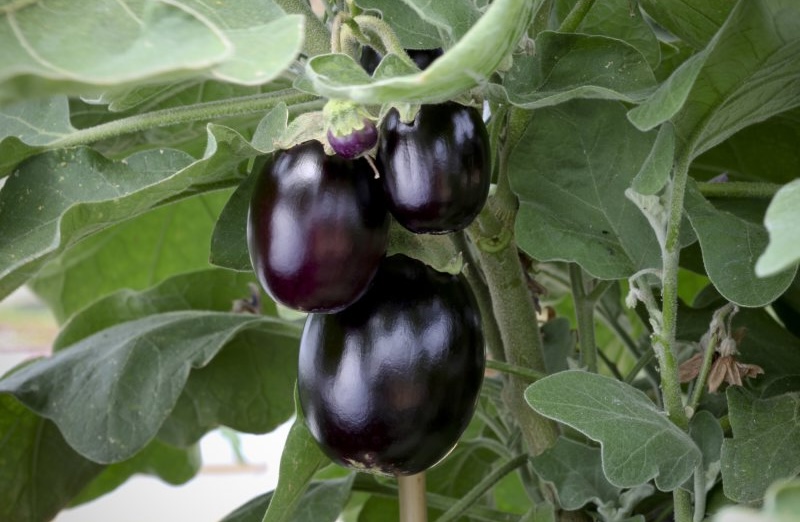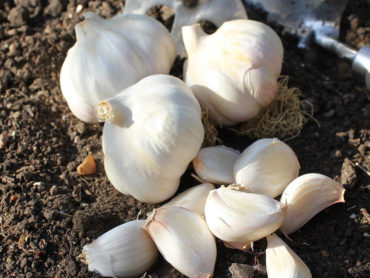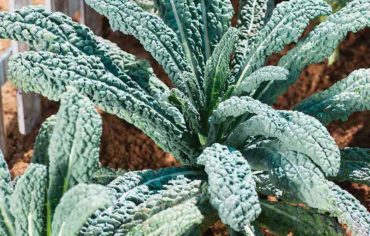Aubergines are part of the same family as tomatoes, peppers and chillies and need plenty of warmth to thrive. Best grown in a bright greenhouse or conservatory, they can also be grown on a sunny patio in the warmest parts of the UK. Just start the seeds off early to give them a long growing season. Here, experienced allotment grower Lee Senior shares top tips on how to grow aubergines from seed.
Want to give them a go? Browse our full range of aubergine seeds here.
What are the best aubergine varieties to grow?
The variety of aubergine you choose will depend on the growing conditions you can provide. This is the most important consideration, as these glossy black fruits have fairly exacting needs. Aubergines are tender plants when grown in the UK. If you’re growing them outdoors they need lots of sun and a warm, sheltered location. If you’re growing the plants in a greenhouse or conservatory, then your choice of varieties will be far greater. For outdoor growing, early-maturing varieties are best. And as a general rule of thumb, smaller-fruited varieties are a little better suited to UK conditions.
Most of us think of aubergines as being that familiar, glossy deep purple colour. While this is of course true, these days there are many other colours too! For instance, Aubergine ‘Green Knight’ F1 is completely different to any other I’ve ever grown. The unusual slender jade-green coloured fruits are sweet-tasting and perfect for stir-fries and curries. This variety also has the bonus of being one of the earliest to mature, so it’s a good one for northern parts of the UK.
Meanwhile a packet of Aubergine ‘Patio Mix’ seeds contains a whopping four different varieties providing a veritable range of colours: ‘Jackpot’ (also available as potted plants) has dark purple fruits, ‘Amethyst’ has bright purple fruits, ‘Pinstripe’ has cream and purple striped fruits and ‘Ivory’ produces creamy white fruits. All the varieties are F1 and suitable for growing in pots as well as conservatories, greenhouses or sheltered courtyards.
Perhaps the most popular variety is Aubergine ‘Black Beauty’. A reliable early cropper, it produces good-sized fruits on plants that reach a height of up to 1.2m (4ft) when they are growing well.
‘Genie F1’ is another excellent white-fleshed variety that has the benefit of spineless stems. This makes it a good choice If children are around or you want a variety that’s easy to harvest.
How and when to sow aubergine seeds
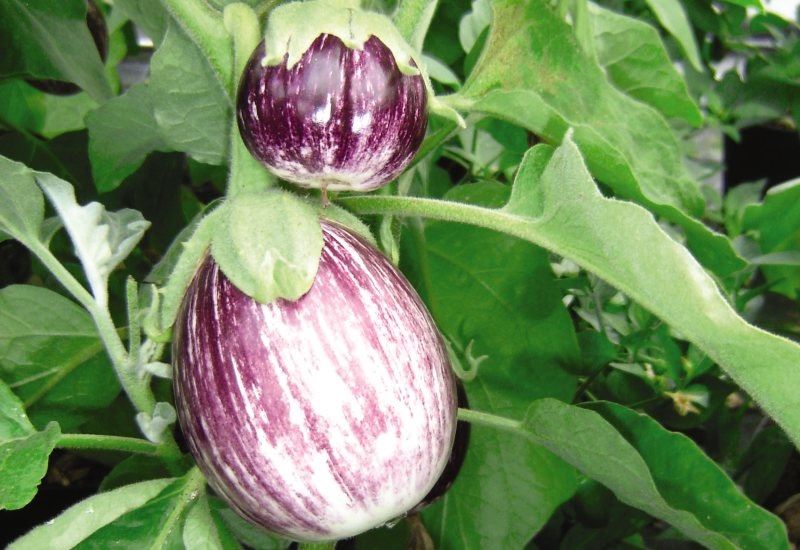
Stripy ‘Pinstripe’ is a dwarf variety that is ideal for pots, tubs and raised beds
Image: Aubergine F1 ‘Pinstripe’ seeds from Suttons
Aubergines need a long growing season in the UK to allow time for the fruits to ripen. As long as you can provide sufficient heat and warm growing-on conditions, they’re normally one of the first seeds of the year to sow. I always start my aubergine seeds between the end of January and mid-February, using a heated propagator.
To sow your aubergine seeds, sprinkle them on the surface of seed compost in a tray or small pot and cover with a 6mm layer of compost or vermiculite. Aubergines require a minimum temperature of 18C to 21C for reliable germination, and it typically takes between 2-3 weeks. Placing the seed tray on a radiator at home and covering the tray with a lid can help germination if required. One of the main reasons that aubergine seeds fail is that the temperature isn’t consistently warm enough for germination to take place.
Once the seedlings emerge, grow your young plants on in a light and bright place with minimum daytime temperatures of 16C. At night, protect them from severe cold and frost and, if you’re growing them on a windowsill, please be mindful that the temperature between glass and curtains can drop very significantly. If you can’t provide enough warm and light after germination, your seedlings will struggle to develop. (This is when it makes sense to purchase potted, grafted vegetable plants that have already passed the seedling stage when they arrive.)
Once the true leaves form and the plants begin to grow strongly, move them into small individual pots of free-draining compost and keep the plants moist.
Outdoor specimens should be hardened-off in the normal way with a view to planting out at the end of May after the risk of frost has passed in your area. I sometimes provide extra protection with a cloche or fleece if the weather is cold. Providing protection from cold winds is essential.
How to plant aubergines
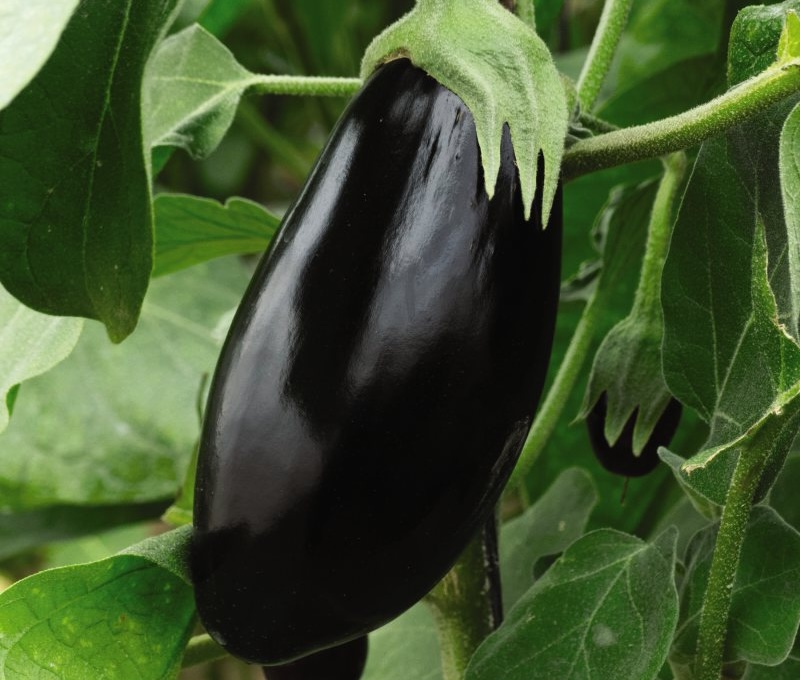
‘Black Beauty’ produces early-maturing, glossy fruits
Image: Aubergine ‘Black Beauty’ seeds from Suttons
Aubergines need lots of sun and warmth and should be planted in non-exposed locations. They will grow in pots, growbags or directly into good-quality soil in a greenhouse or polytunnel.
If you’re planting in containers, the ideal pot size for aubergines is 30cm, although a little larger is fine. Use good-quality proprietary compost, which can be mixed with garden compost and well-rotted organic matter if required.
If you’re planting into good quality borders in the greenhouse or polytunnel, space your plants about 60cms apart. Give them a good water and ensure that temperatures aren’t too high while the plants are establishing in their new home.
How to care for aubergines

These delicious Asian aubergines are a glossy jade green colour
Image: Aubergine Green Knight F1 seeds
Aubergines are related to peppers and tomatoes and need similar growing conditions. Growing them outside is less predictable but, having said that, last summer I successfully grew aubergine plants outdoors from June until September in a year when the weather only spluttered into summer-mode rather sporadically!
For the most part I generally grow aubergines indoors, and I prefer a greenhouse to a polytunnel. Taller varieties like ‘Black Beauty’ need support canes as they can become top heavy, and this variety reaches over 1 metre in height. By contrast, the dwarf types reach just under half that height. To help with pollination, try misting the flowers and make sure there is good ventilation in the greenhouse to allow pollinating insects in.
I like to feed my plants fortnightly with a high potash tomato feed to encourage fruit formation. If the setting of flowers is very good and the plants are carrying lots of immature fruits, it can be worth increasing this frequency to once per week.
Water aubergines liberally in hot dry conditions, especially plants that are grown in growbags and pots. Try to avoid letting the compost dry out. Aubergines require a moist soil and dryness at the roots can be one cause of flowers dropping off.
When your plants reach a height of about 45-50cm, pinch the top of taller (non-dwarf) varieties. This encourages the plants to bush out and give a good yield of up to five or six fruits. Dwarf varieties generally don’t need the top pinching out, but it’s a good idea to check the seed packet for each type.
Red spider mite can be a common pest for plants in the greenhouse. One way to combat this is to mist the leaves with a fine spray of water in the evening. Alternatively, spraying the floor of the greenhouse (this also benefits cucumbers) helps to deter this pest as it dislikes humidity. Whitefly and aphids can also strike, but these are generally manageable on aubergines.
In my experience, coldness, cold winds and dryness at the roots are the main issues to try to avoid.
How to harvest aubergines
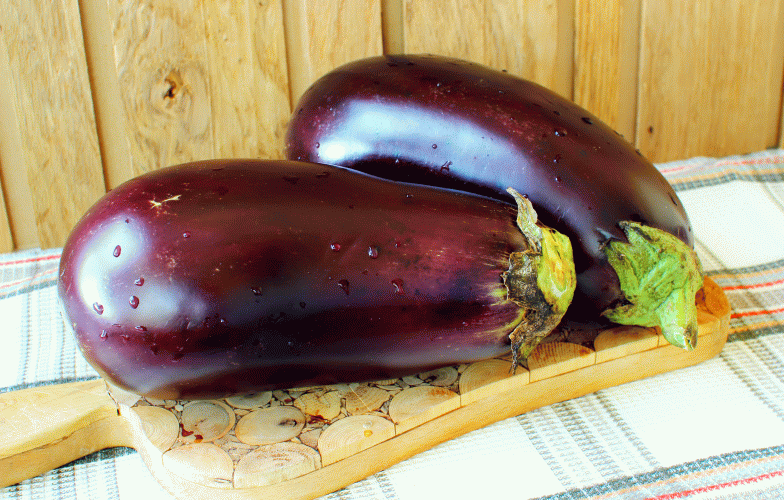
‘Galine’ is ideal for greenhouses, pots or raised beds
Image: Aubergine F1 ‘Galine’ seeds from Suttons
It’s not as easy to tell when aubergines are ready to harvest as it is with tomatoes. A nice glossy sheen on the fruits, a consistent colour and being firm to the touch are all good signs that they’re ripe.
A number of varieties have spines on the stem, so it’s a good idea to wear gloves when harvesting. Over the years I’ve used a sharp pair of secateurs to cut the fruits away from the main growing stem. I’ve also experimented with twisting the fruits away when the secateurs haven’t been close to hand… Cutting is far better as it minimises the risk of damage to the main stem. Support the fruit with your spare hand as you cut.
Once harvested, undamaged, good-quality fruits can be stored for a week or so in a cool place. Or they will manage several days in the fridge before they start to deteriorate. I prefer storing in a cool room rather than the fridge, but some allotment holders disagree! As aubergines have a relatively short storage life, your best bet is to eat them as quickly as possible for maximum quality and flavour.
We hope we’ve inspired you to try growing your own aubergines from seed. Find more of Lee’s practical, hands-on, vegetable growing advice over at his monthly allotment pages. You can also follow Lee on his Instagram page: @lee_senior_gardening.

